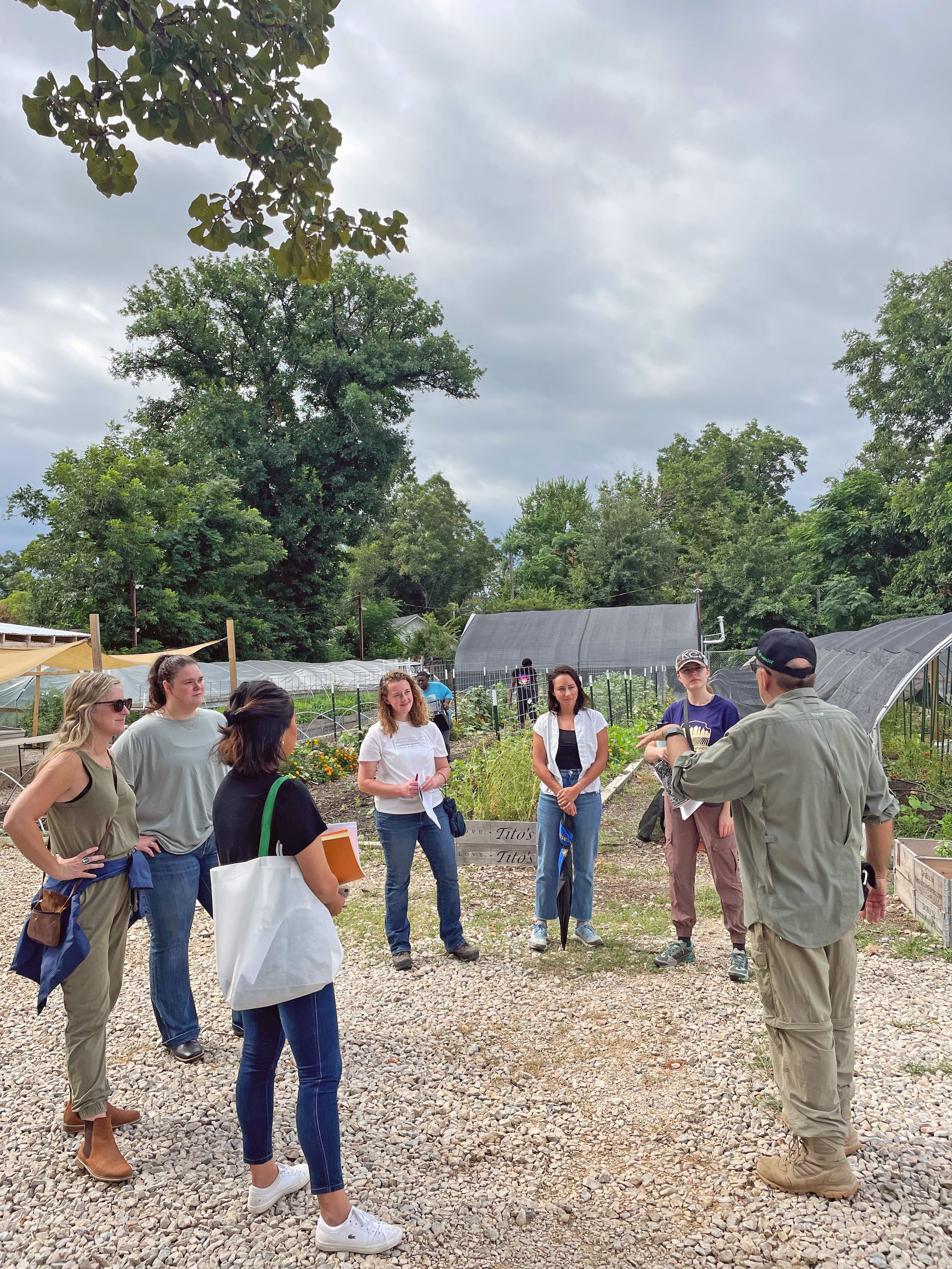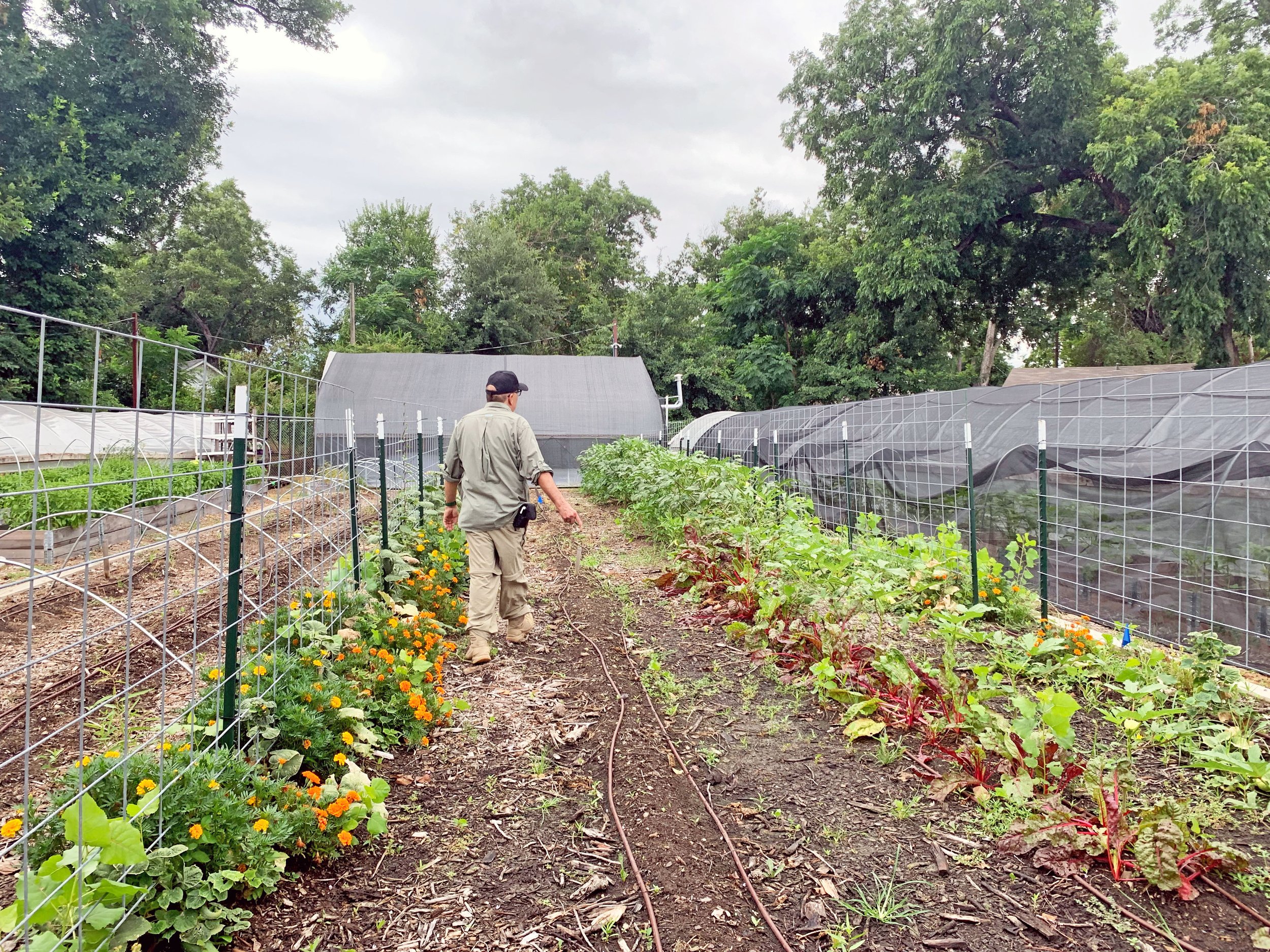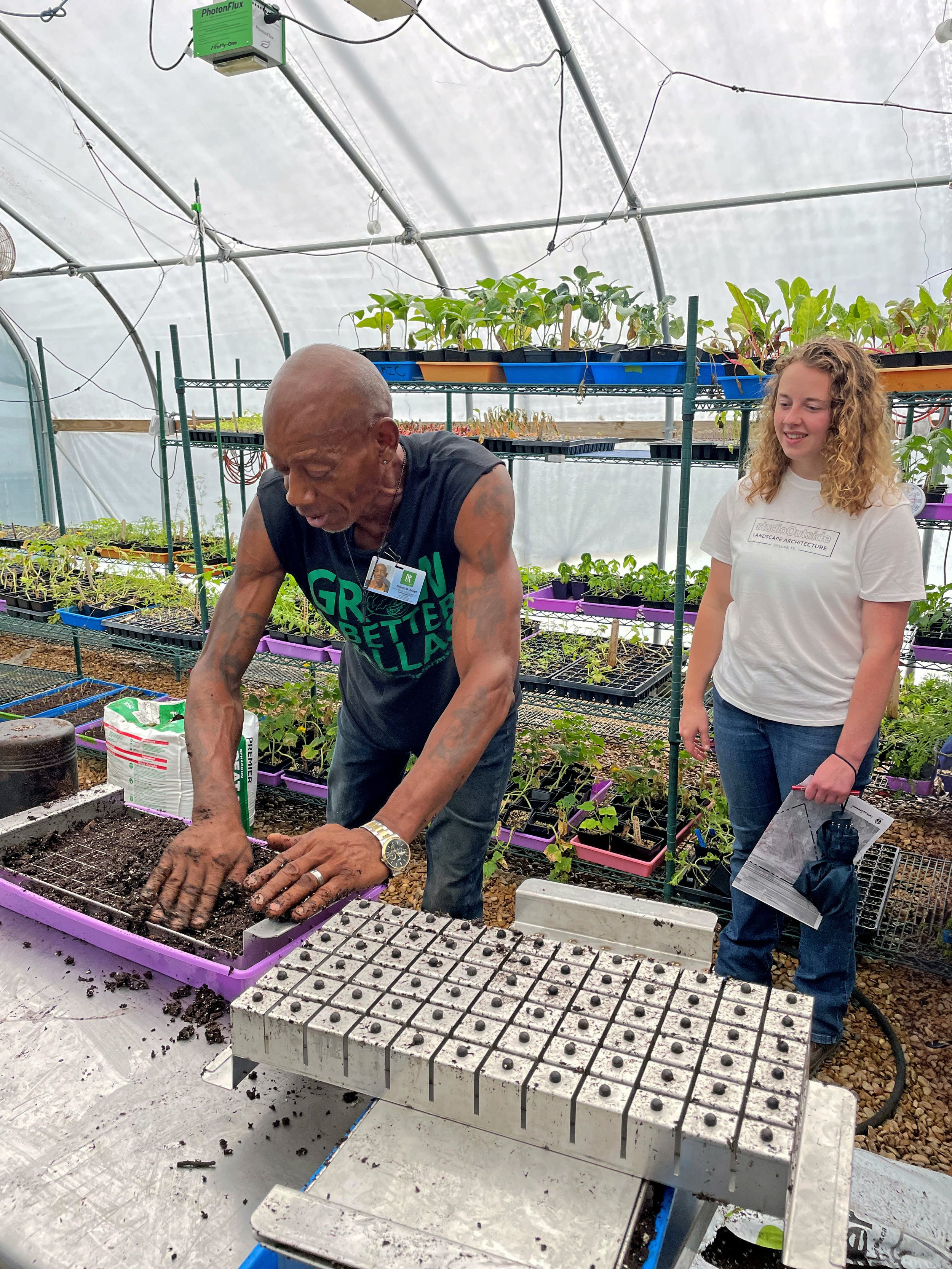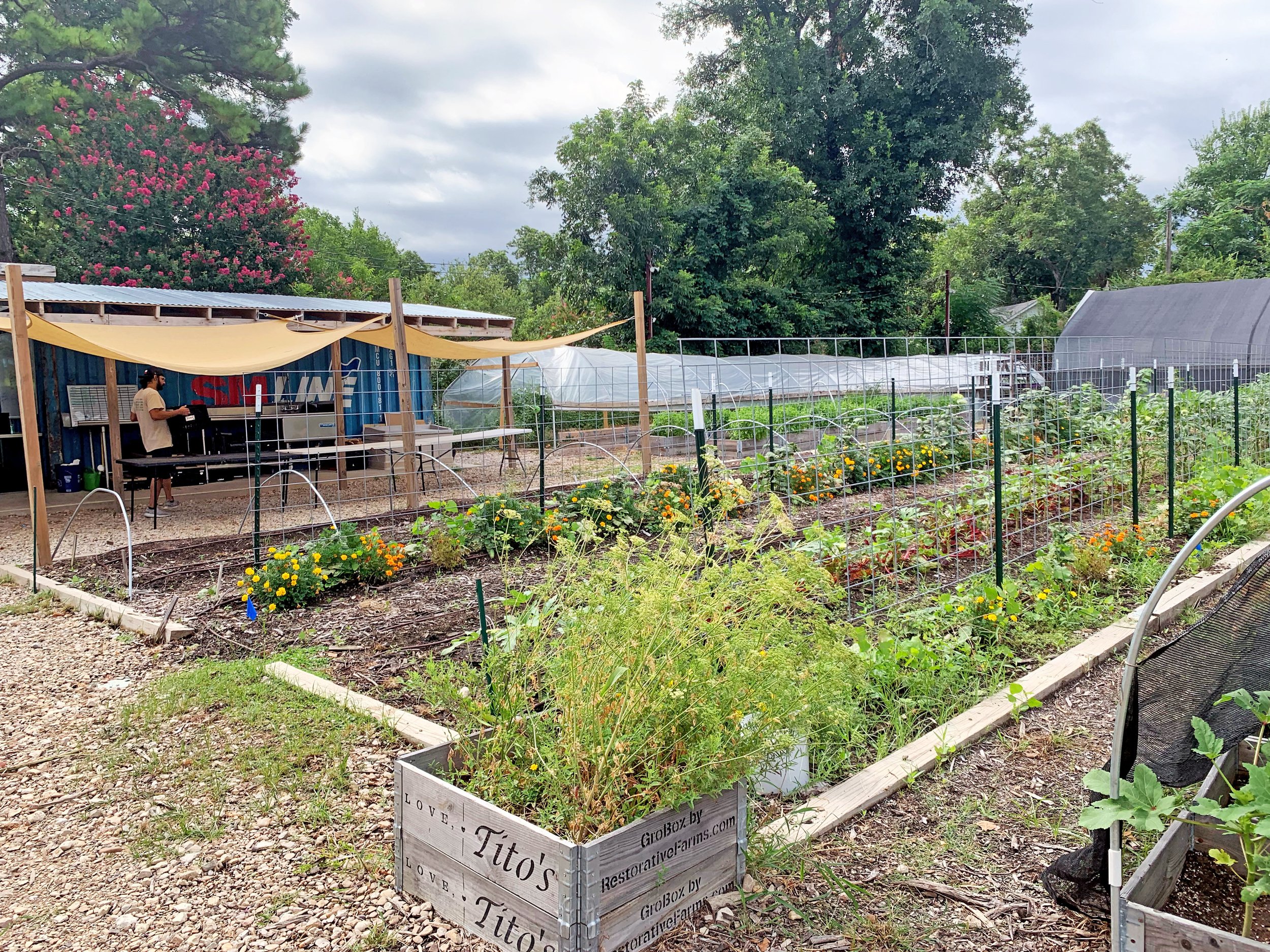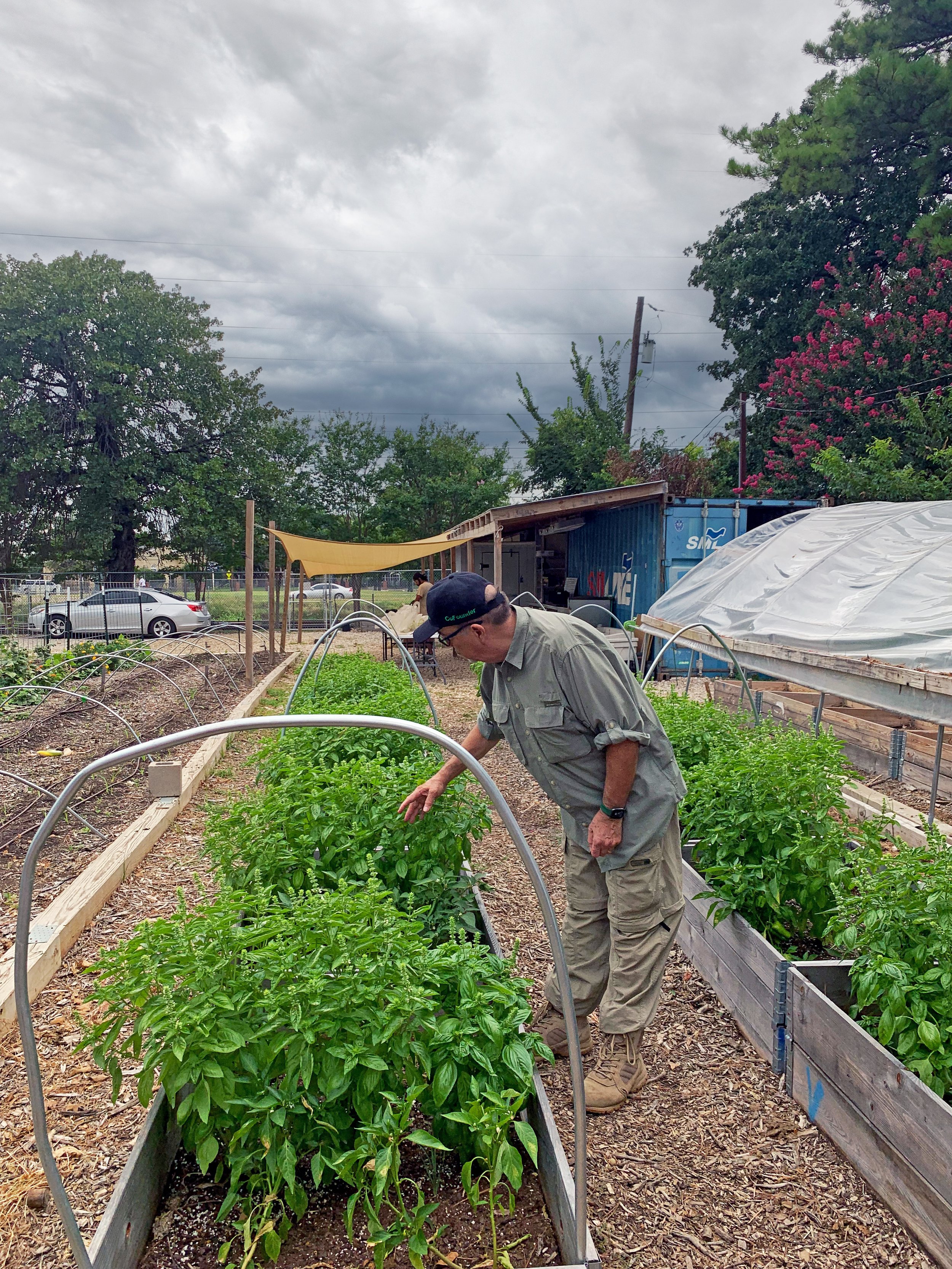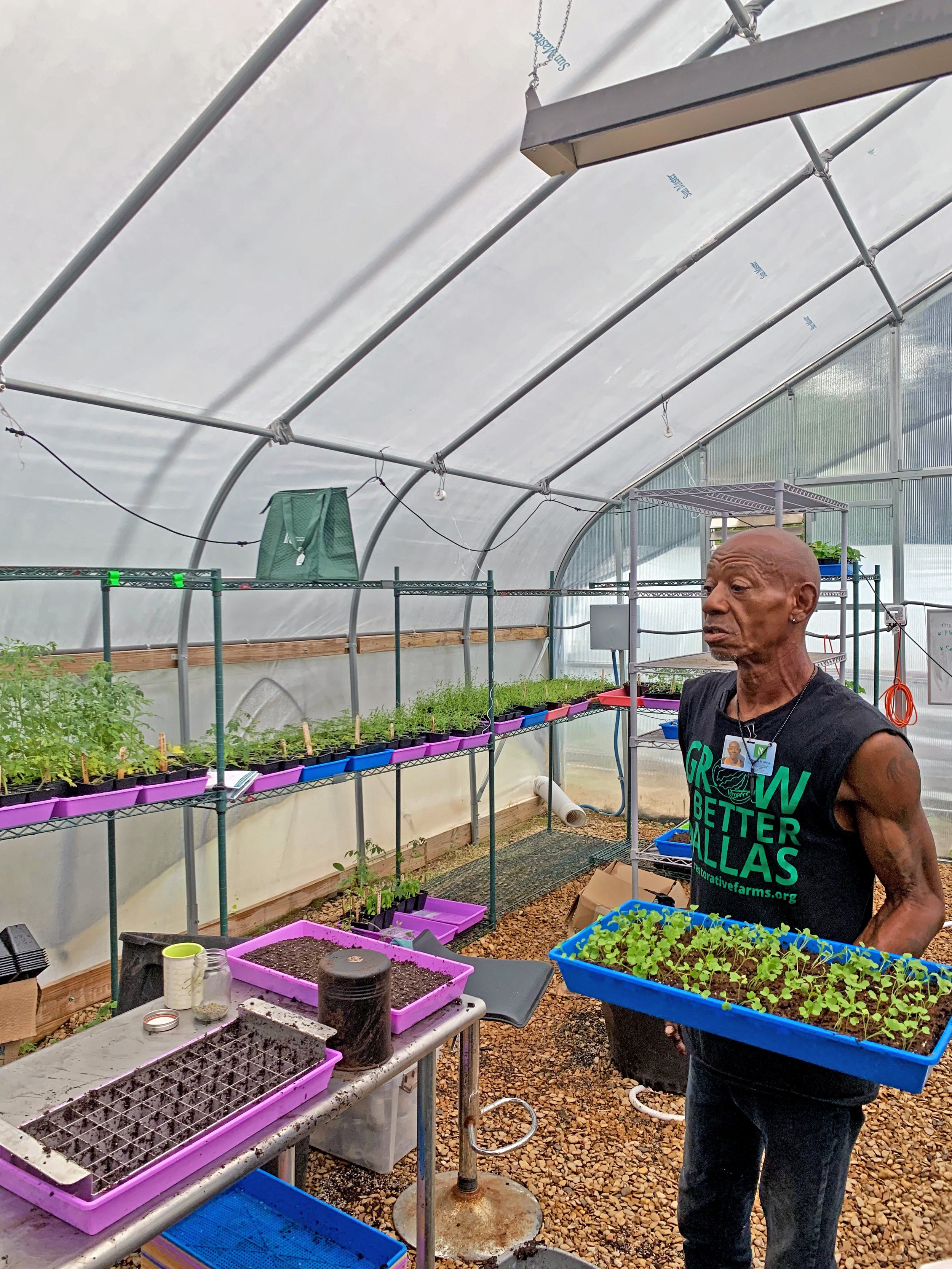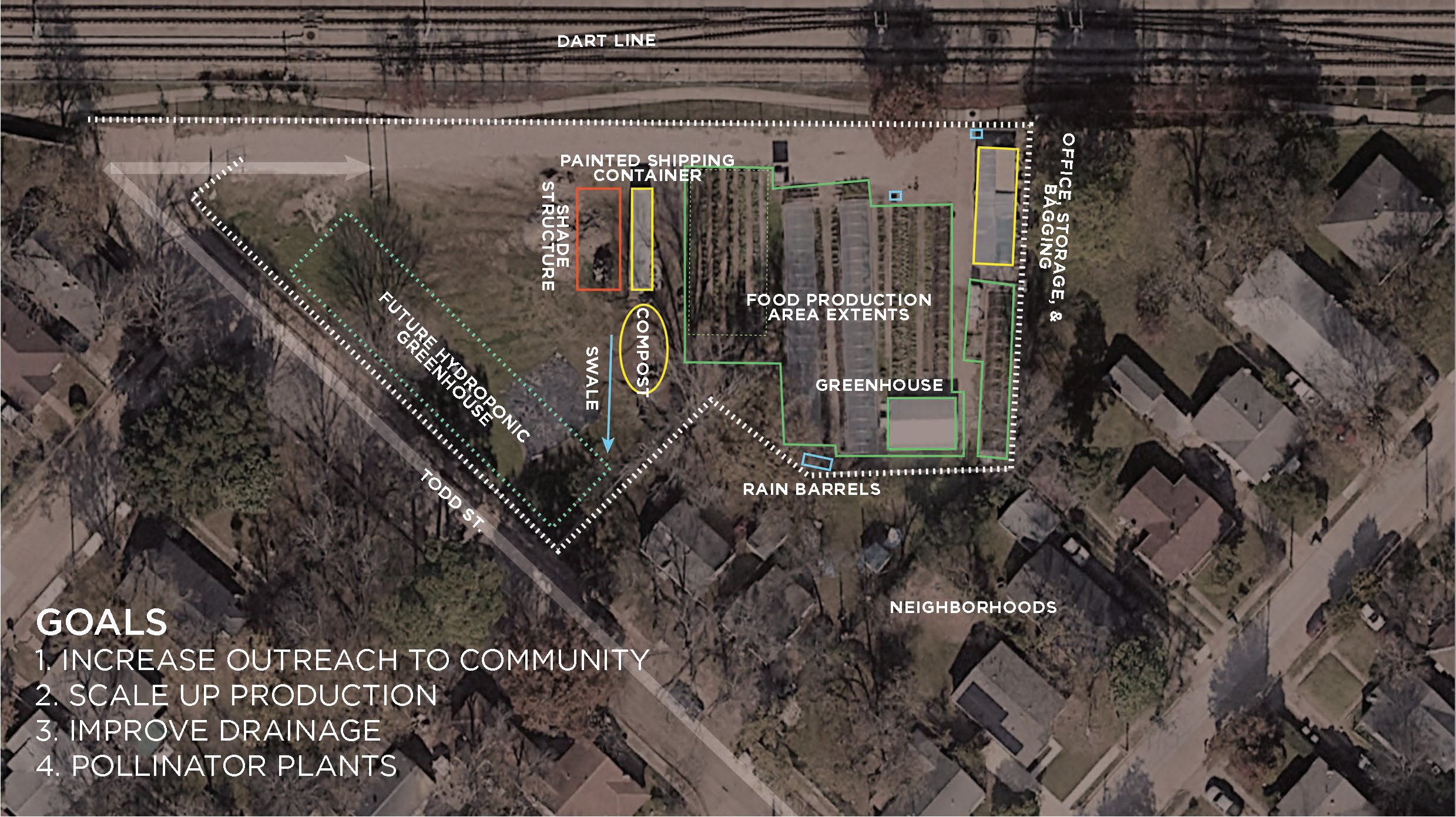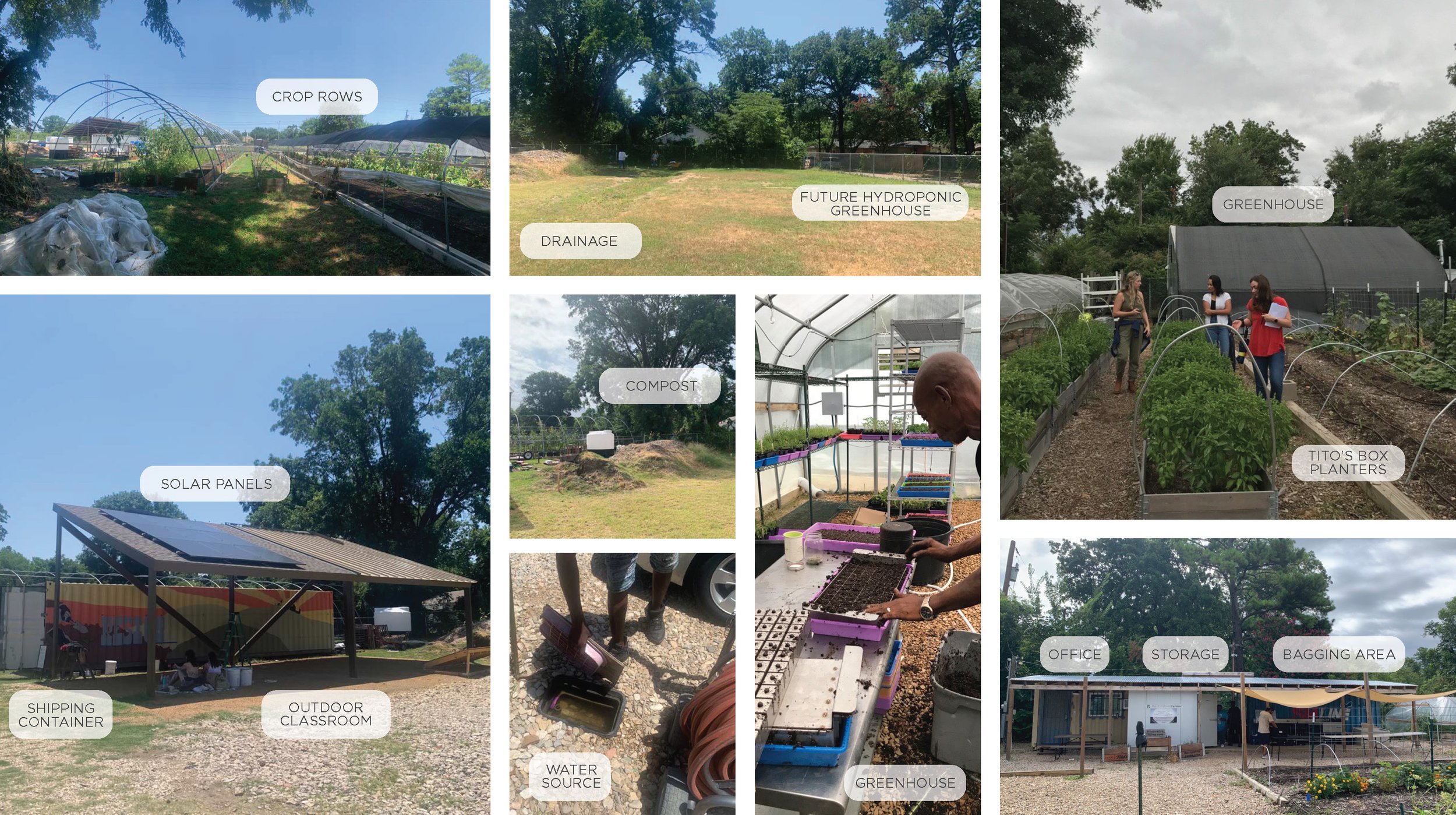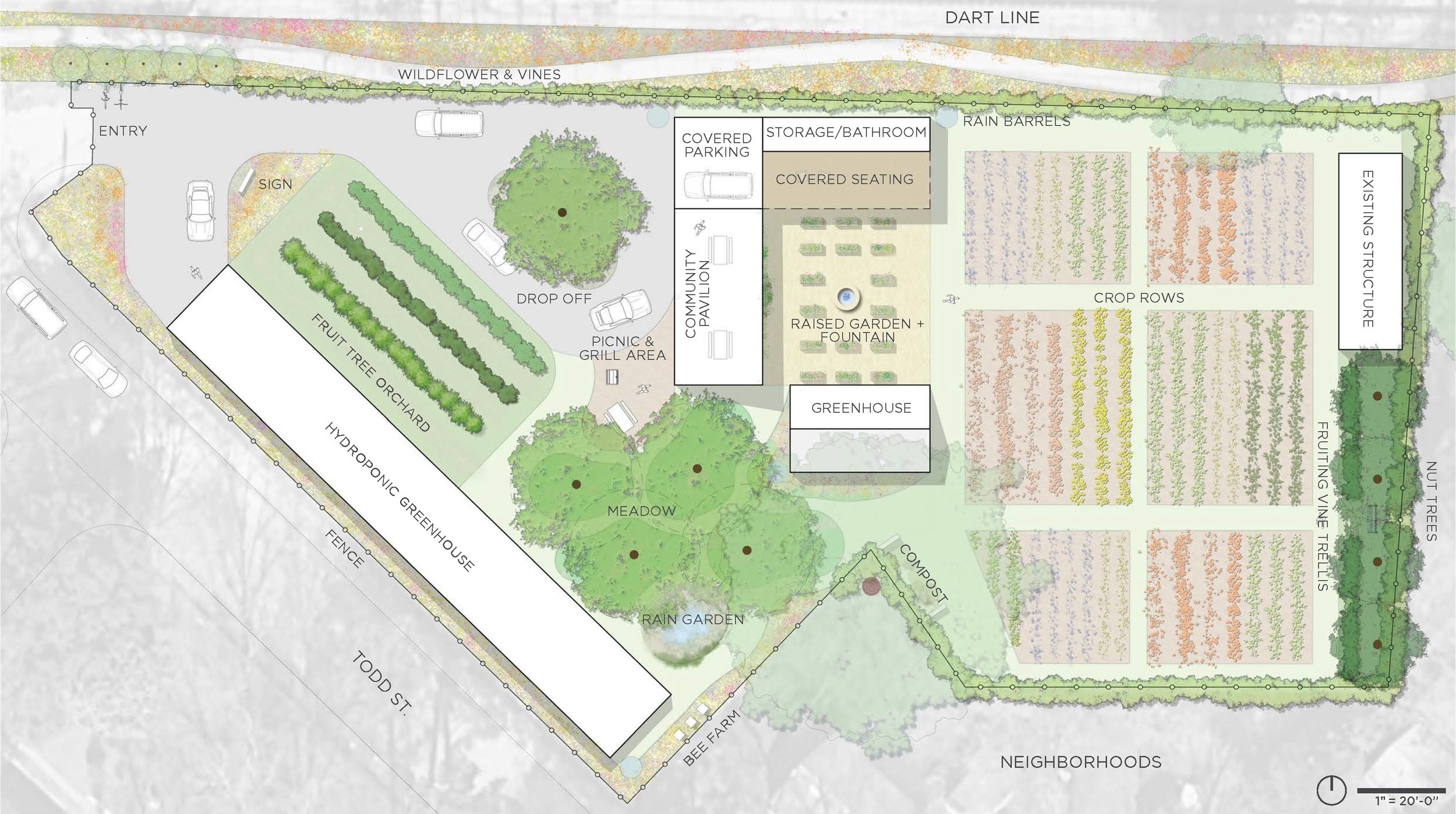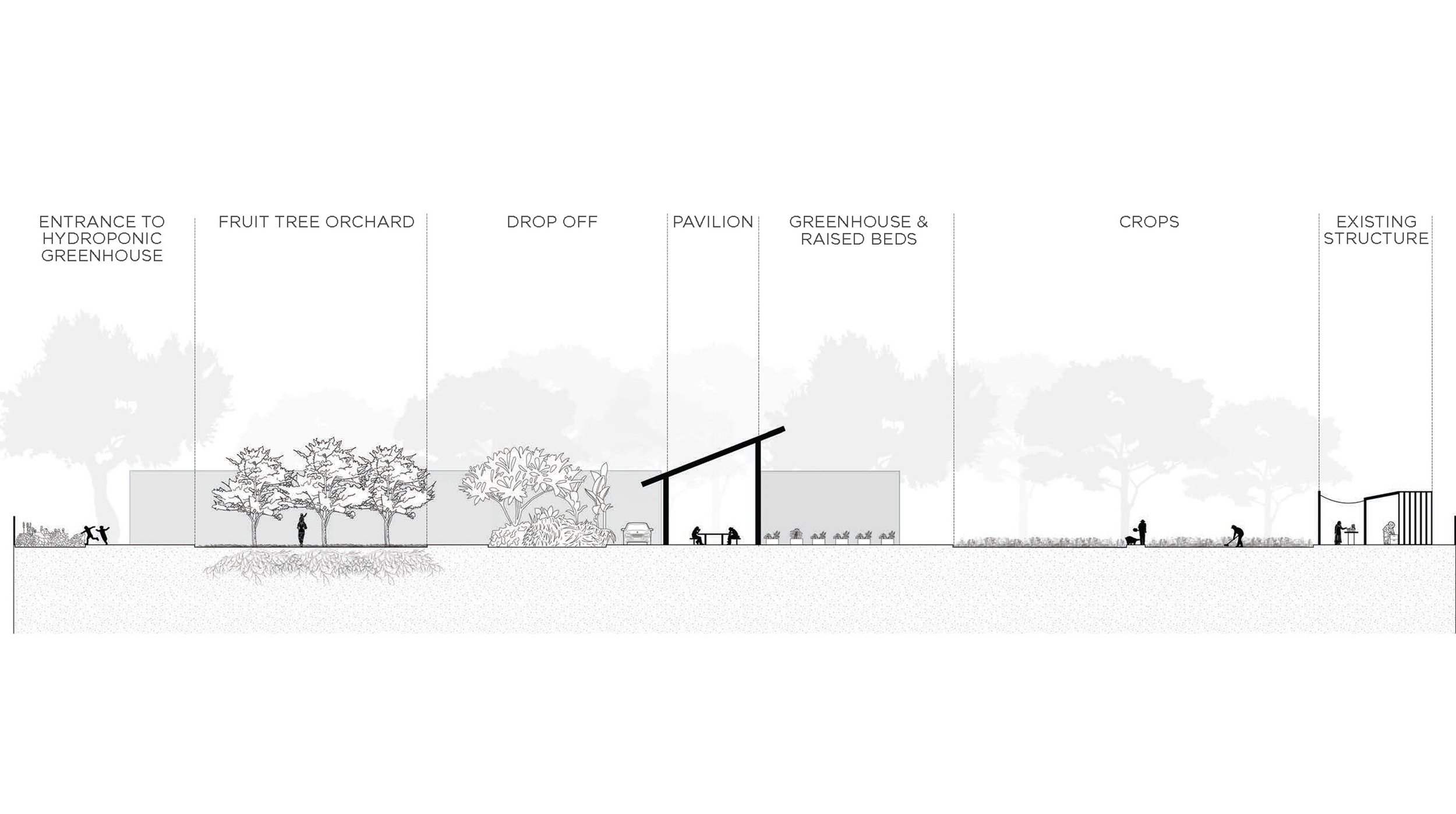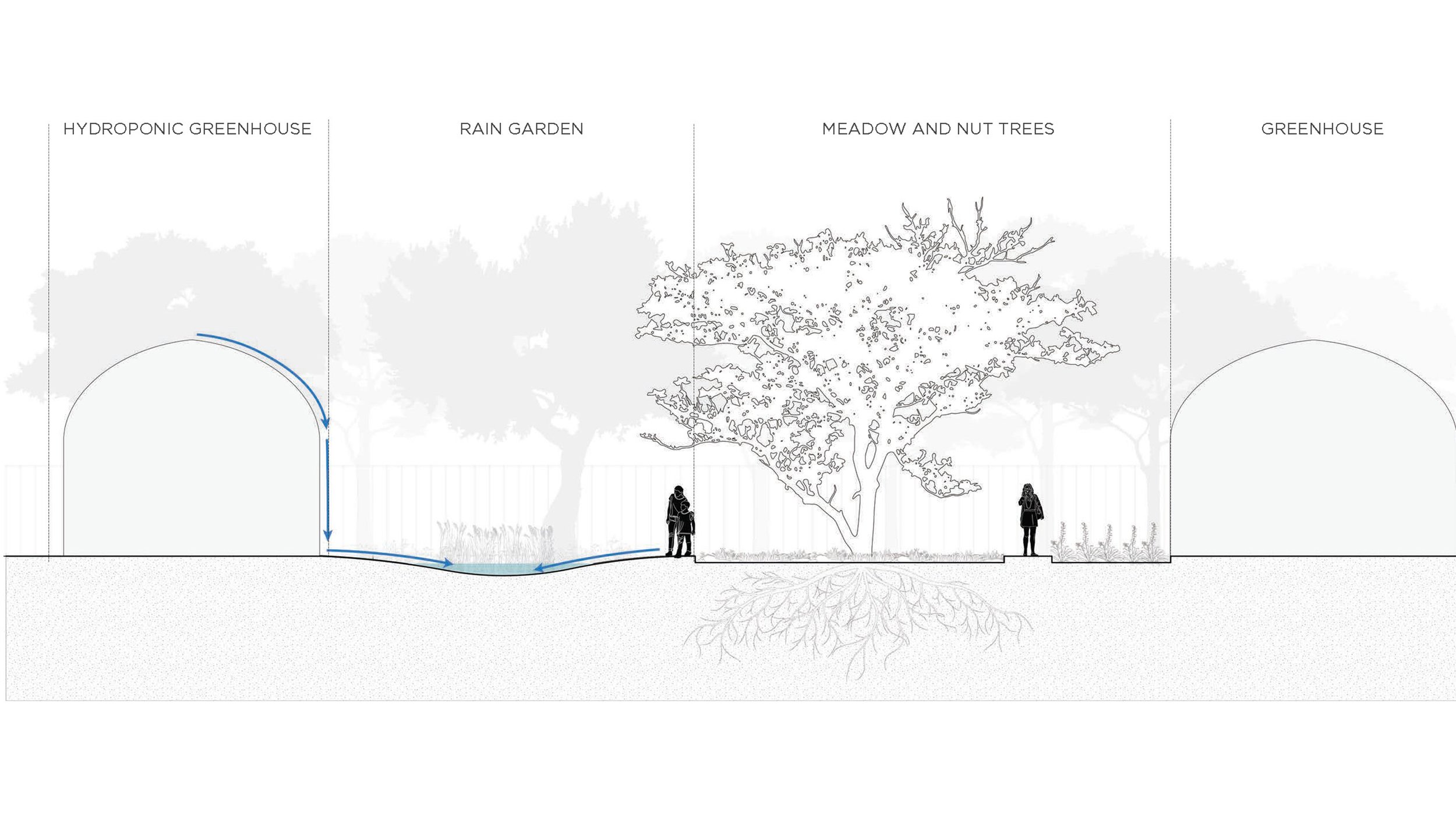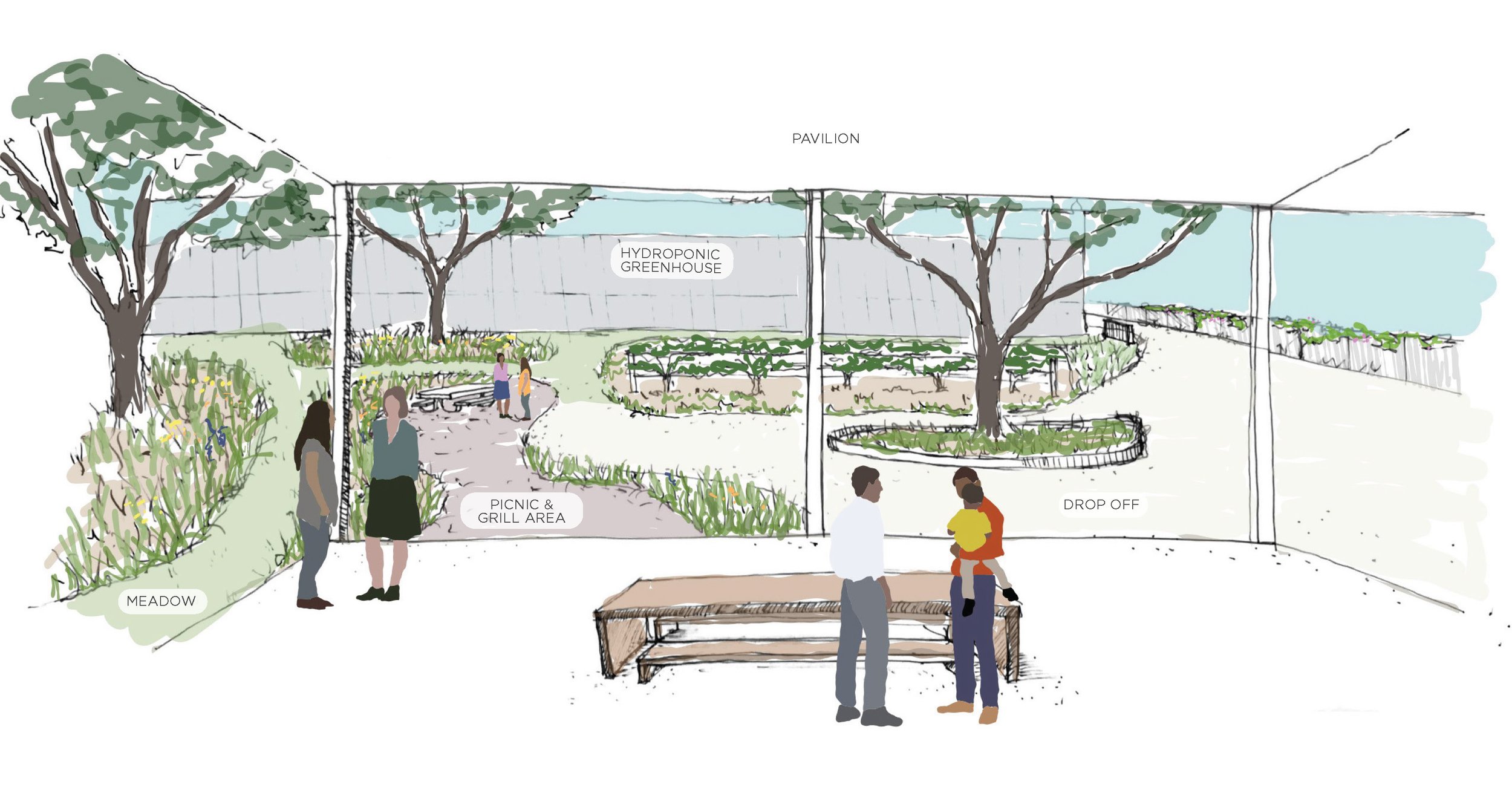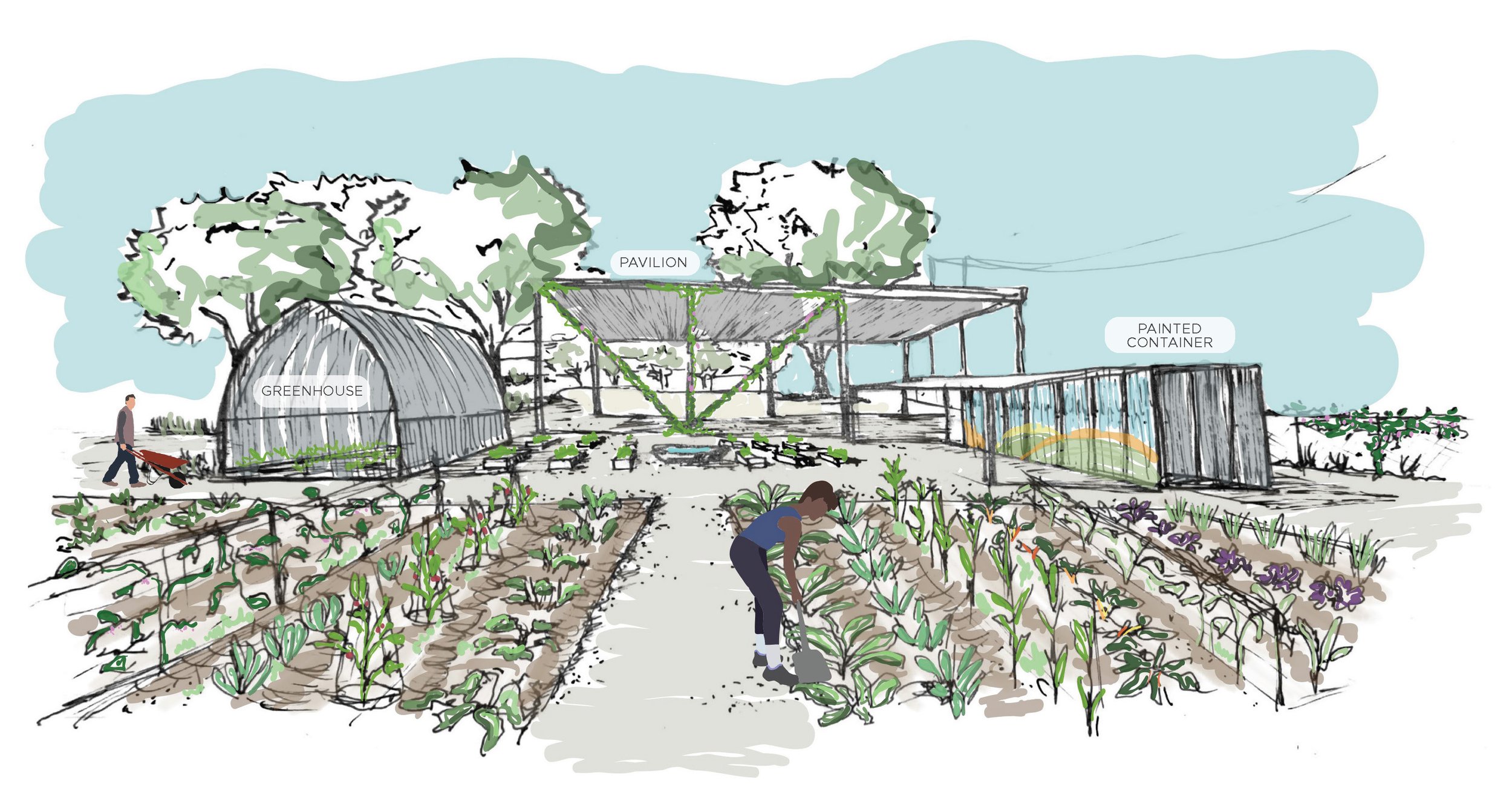Studio Outside has seven new faces in the office. We are pleased to announce our latest hires: Jessie Hitchcock, Xilin Wang, Bilwa Gulavani, and Audrey Fann who have joined us as full-time landscape designers. Additionally, we welcome Jaime Escribano, Guao Yue, and Ryan Shelborne as our latest landscape design interns.
jessie hitchcock
1. Who is your favorite designer or person you admire?
My honorary aunt (she’s technically my second cousin), Lorna Habegger Harder. She is a retired college biology professor who now works to restore and cultivate relationships and functionality within ecological systems, specifically teaching humans how to connect with, care for, and invest in the environment. Her current work includes returning her 100-acre farm to the local native prairie landscape (which will ultimately be donated to the Trust for Public Land), working with her local arboretum related to planning and programming, helping a community navigate a wetland implementation project, and designing a memorial garden for local families to honor their loved ones who have passed on. She is also writing a book AND helping charitable organizations with grant-writing efforts. She is incredible—I only hope to be half as impactful with my life’s work!
2. What is your favorite landscape architecture project?
The High Line. I visited it several years before changing career paths. I love so many elements about this project—adaptive reuse, creatively “rewilding” a corner of NYC, the incredibly unique perspective it provides of the surrounding neighborhoods and architecture, and the diversity of user groups we met along the way. I also love walking, so I appreciate any opportunity to move through a unique landscape on foot.
3. What are your career aspirations?
The specifics of this will continue evolving, but generally, I hope to create inspiring spaces that bring joy to individuals and communities, encourage harmony between humans, flora, and fauna, and positively impact local and global ecological systems.
4. What/who inspires you regarding design and the profession?
I’ll have to pick two: Beatrix Farrand and Kate Orff. Both trailblazers during their respective times in history, I am genuinely inspired by learning more about each woman’s life story, studying their work, and witnessing each one’s impact on the profession and the communities they served/serve.
fun facts:
Where are you from: My dad was a high school football coach, so we moved around often. We’ve lived in Brownwood, Alice, Kingsville, Perryton, and Lockhart. We also lived in Del Norte, Colorado, for a year. We spent the most time in Lockhart, the “Barbecue Capitol of Texas,” where I graduated high school, so I consider it my hometown.
Which university did you attend/what is your alma mater: I earned my undergraduate degree in biochemistry from Angelo State University and my master’s degree in landscape architecture from the University of Texas at Arlington.
First Impression of Dallas: I first visited Dallas for a club sports tournament (basketball!) in high school. There are so many lights, roads, and SO MUCH TRAFFIC!! I’ve enjoyed exploring it more as an adult. I love the variety of neighborhoods, the people, and the food scene!
Favorite Plant: The Texas Live Oak is the most majestic tree! Live Oaks provided dependable “shade breaks” when riding my bike during the hot summers of Central Texas and an intricate assembly of tiny windows framing the big starry Texas skies after sunset.
Favorite movie or book: Movie: Skyfall; Book: All the Light We Cannot See by Anthony Doerr
Hidden Talent: Throwing “casual” dinner parties with five-star food!
Do you have any hobbies? What got you into it? Interior makeovers. We moved around a lot when I was growing up, and it was always a unique and fun challenge to make our new houses feel like home. Discovering that moment when everything is balanced and feels “right” is truly satisfying!
Xilin Wang
1. Who is your favorite designer or person you admire?
Junya Ishigami tends to blur the boundaries between the constructed and nature—his approach is so harmonious that the delineation between nature and architecture becomes indistinct. I like how he plays with invisible elements like air and light as part of the design, weaving them together with child-like creativity. I feel a sense of wonder in his project.
2. What is your favorite landscape architecture project?
The Great Buddha Hall, designed by Tadao Ando, is one of my favorite projects that blends landscape and architecture. The design involves traversing a serpentine water courtyard and an echoing tunnel, building up to the awe-inspiring full view of the Great Buddha. Only the Buddha's head is visible from afar, which stirs people's imagination.
3. What are your career aspirations?
I want to be at the forefront of shaping environments to bring care into the future, making the most of my skills.
4. What/who inspires you in regard to design and the profession?
Z+T Studio's public space designs in China around the 2010s inspired me to see land and city spaces differently, and I realized the potential and power of design. From playgrounds to rain gardens, their projects artfully take history into the present, with a sense of responsibility to create thoughtful public spaces. Because of this, I transferred from civil engineering to landscape architecture.
fun facts:
Where are you from: Nanning, China - a city with trees, lakes, and Karst mountains.
Which university did you attend/what is your alma mater: University of Virginia
First impression of Dallas: The warm tropical climate reminds me of my hometown Nanning!
Favorite plant: Muhly grass is soft, free-flowing, and airy, with a loosely arranged structure that gives it an impression of natural, effortless charm.
Favorite Book or movie: "Nausicaä of the Valley of the Wind," by Hayao Miyazaki, was published in 1982. It delves into themes of environmental protection and anti-war. Its wonder is found in the intricate weaving of life's predestined nature with the spirit of overcoming fate.
Hidden talent: Sleep 10+ hours.
Do you have any hobbies? What got you into it? I got into bouldering through a UVA friend who always wears climbing shoes to classes. As a beginner, I recently tried belaying. I like climbing because it requires focus, strength, and endurance. I appreciate the process of finding my way into the unknown.
bilwa gulavani
1. Who is your favorite designer or person you admire?
Charles Correa, Kate Orff and Piet Oudolf.
Amidst the dominance of corporate architectural practices, Charles Correa stands as an emblem of singular brilliance, harmonizing culture, climate, and technology within the rich tapestry of Indian architectural tradition. Kate Orff, a luminary of activism, empowers communities to design urban habitats resilient to climate change. Piet Oudolf’s transcendent gardens, resembling living canvases, evoke profound admiration for their artful planting designs, celebrating the kaleidoscope of seasonal variations with boundless joy.
2. What is your favorite landscape architecture project?
The Lurie Garden at Milennium Park.
3. What are your career aspirations?
Bridging the realms of architecture and landscape architecture, I am on a curious expedition to explore the fields of the built and the unbuilt.
4. What/who inspires you regarding design and the profession?
My inspiration stems from natural systems, urban habitats, and human and architectural interactions with local ecosystems.
fun facts:
Where are you from: Pune, India
Which university did you attend/what is your alma mater: Ohio State University
First Impression of Dallas: Winding freeways, and a lot of them, spread out urban fabric and the most beautiful sunrises and sunsets!
Favorite Plant: Hibiscus
Favorite movie or book: Braiding Sweetgrass (book)
Hidden Talent: Embarking on a “cityscape adventure” with just my sketchbook and a flair for doodling, I decode/unravel the urban patterns of neighborhoods from a bird’s eye view.
Do you have any hobbies? What got you into it? Reading books, sketching, gardening, playing badminton, singing, and listening to Indian classical music.
Audrey fann
1. Who is your favorite designer or person you admire?
Martha Schwartz's designs always push past boundaries, using a wide variety of shapes, striking colors, and innovative materials. I would love to choose a few and begin visiting them, fully immersing myself in the Martha Schwartz experience.
2. What is your favorite landscape architecture project?
Dunbarton Oaks, in Washington, D.C., is one of my favorite landscape architecture projects. It is a living art exhibit with beautiful gardens, art exhibits, and large-scale sculptures throughout the property.
3. What are your career aspirations?
I want to be able to do meaningful large-scale ecological design projects. Protecting, conserving, and creatively restoring landscapes through design would be my peak career goals, along with helping bugs, animals, and other creepy crawlers live long, fruitful lives.
4. What/who inspires you in regard to design and the profession?
Kelley Oklesson. I worked with Kelley as an adjunct professor for two semesters at the University of Maryland. Her passion for humans and the environment is unquantifiable. She is not afraid to push boundaries for the betterment of herself, her community, and design. Kelley is truly ensuring a better future for all LAs to come.
fun facts:
Where are you from: The Rio Grande Valley
Which university did you attend/what is your alma mater: University of Maryland
First Impression of Dallas: Dallas is a very busy and active city. Everyone seems to be always rushing to get somewhere. There is a lot of community and enjoyment in being here.
Favorite Plant: I absolutely adore a pilea peperomioides (Chinese money tree) plant. It’s the only plant I’ve been able to keep alive for over a year! While she is no longer with us, I appreciated all those days watching my tiny plant pup grow.
Favorite movie or book: Big Fish. It's about outgrowing your environment, like a goldfish would only grow to fit the confines of the bowl but can thrive and grow larger if put in a more expansive space. The story depicts leaving a place of comfort to explore the big world, thus growing and finding adventure. Or it's just a movie about a big fish. Check it out and let me know.
Hidden Talent: I know how to crochet. I learned how to make a few small things like coasters, and bags then I made a blanket and burned myself out. Who needs a $20 blanket when you can buy all the materials and spend hours upon hours making one yourself!
Do you have any hobbies? What got you into it? Going to the movies must be my most consistent hobby. I have it timed perfectly for when I need to leave my house and not have to witness a single commercial. I used to go pretty religiously- every Sunday. My family used to go all the time, too, so that’s where it stemmed from. Movies are just 90 minutes to two hours; I can escape reality and enjoy pretty colors on a screen. I don’t go to be a real critic, just to enjoy the art of film.
Jaime escribano
1. Who is your favorite designer or person you admire?
Antonio Gaudí has always been an incredible designer that I have always admired.
2. What is your favorite landscape architecture project?
Jardín de la Casa del Agua’ by Fernando Caruncho, in Peloponnese, Greece
3. What are your career aspirations?
I want to finish my architecture degree and work in the architecture/landscape architecture industry, which I am passionate about. As an architect, I would love to shape the physical environment around us, leaving a lasting impact on communities and societies. I would design aesthetically pleasing and functional structures while also considering sustainability and efficiency.
4. What/who inspires you regarding design and the profession?
Mies van der Rohe, Frank Lloyd Wright, Antonio Gaudí, Frank Gehry, Zaha Hadid, and Norman Foster
fun facts:
Where are you from: I am from Marbella, a city on the South Coast of Spain.
Which university did you attend/what is your alma mater: I am studying for a degree in Architecture at the University of Hertfordshire in the UK.
First Impression of Dallas: Dallas is a diverse city with thriving arts scenes, world-class museums, and famous sports teams. It is a great city where you will never run out of things to do or food to try.
Favorite Plant: Night blooming jasmine (Cestrum nocturnum) because it reminds me of my home.
Favorite movie or book: My favorite book is “The Boy in the Striped Pajamas” by John Boyne.
Hidden Talent: None that I know, but I know how to speak 4 languages (Spanish, English, French and Russian).
Do you have any hobbies? What got you into it? Love to travel, learn about new cultures, try food from other countries.
Guao yue
1. Who is your favorite designer or person you admire?
I like Dame Zaha Mohammad Hadid, the most as a designer. She is a very famous architect in the modern architectural design field. The reason I like her is straightforward. Her bold use of flowing lines and excellent understanding and design of space are fascinating. I have always believed that landscape, architecture, and planning are addressing the same issue of space use. Architecture focuses on the interior, landscape focuses on the exterior, and planning focuses on the larger scale of land use. Architects' control over space and form is also something that landscape designers need to learn.
2. What is your favorite landscape architecture project?
The Little Island in New York, designed by Arup Group, is my favorite landscape design project. The island is supported by many large "pots," with the bottom of each pot connected to the ocean by a thick pillar. The matrix of pots has varying topography, and hundreds of plant species were designed by the designers to be planted on top of them. I admire the designers' imagination and their attempt to create a modern landscape park by combining the powerful materials and design software of modern design industries.
3. What are your career aspirations?
I'm still in the internship stage and have yet to give much thought to future career planning. I'm focusing on taking each step as it comes, and I'll deal with the future when it arrives.
4. What/who inspires you in regard to design and the profession?
My father, a landscape design instructor at a university in Xi'an, inspires and influences me. We both consider ecology to be a crucial aspect of landscape design studies. Landscape design should be an essential approach or tool to address ecological issues on Earth. Therefore, my designs aim to solve ecological problems, restore the environmental functions of damaged land, mitigate land erosion and loss, and help regulate the climate to reduce the urban heat island effect.
fun facts:
Where are you from: I am from Xi'an, Shaanxi, an ancient city in central China. It was once the capital of 13 dynasties and has witnessed the prosperity and decline of many Chinese dynasties. This has brought immense cultural heritage to the city, making the people here stubborn and eager for change, proud yet very friendly.
Which university did you attend/what is your alma mater: Louisiana State University
First impression of Dallas: The city is vast, and the highways are particularly frightening.
Favorite plant: My favorite plant is the Asparagus fern. It's a small, evergreen ornamental plant that thrives year-round in pots. It's also a medicinal plant known for alleviating respiratory diseases. I love its delicate appearance and the fact that it can be grown indoors. It symbolizes eternal and enduring friendship, and it serves as a remedy for curing illnesses.
Favorite book or movie: Avatar
Hidden talent: I feel like I don’t have any hidden talents!
Hobbies: I enjoy playing badminton, making music, hiking, and camping, and I am an aviation enthusiast. Someday, I hope to learn to fly and obtain a pilot's license.
ryan shelburne
1. Who is your favorite designer or person you admire?
The person I looked up to most in my early years was my grandfather, Jim West. He was always working on some project, and I always got to help him in the summers and some days after school. He also provided my first introduction to AutoCAD, as he taught a drafting class for over a decade. My grandfather was the main reason I wanted to start working with my hands, which eventually led to my job in construction.
2. What is your favorite landscape architecture project?
Aquaventure Waterpark at Atlantis, the Palm by EDSA, has always been one of my favorite developments. It shows how beautiful and complex a landscape can be with a reasonable budget and better planning.
3. What are your career aspirations?
My career aspirations involve reaching a position in which I can positively impact my community and others by designing spaces that connect people to nature. I also want to make society more inclusive to all people, no matter their background.
4. What/who inspires you in regard to design and the profession?
What drives me in this profession is that there is something more to learn every single day, no matter how far you progress. This field's diversity is unique in that you can spend a lifetime learning different skills and bits of knowledge within landscape architecture alone.
fun facts:
Where are you from: Lubbock, Texas
Which university did you attend/what is your alma mater: Texas Tech University
First impression of Dallas: My first Impression of Dallas is that it was big, and green compared to home.
Favorite plant: My favorite plant is silver artemisia. Something about its texture and smell reminds me of my childhood.
Favorite book or movie: Lord of the Rings
Hidden talent: I can pull the drain plug out of an oil pan without getting oil on my hands.
Do you have any hobbies? What got you into it? I enjoy playing various sports with friends. This hobby originated from attending the recreational facilities on campus with friends and classmates.










